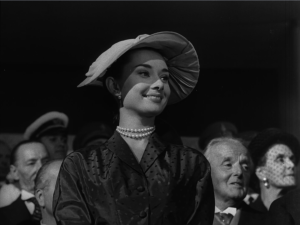We will look back on the 1990s as an era of television that was viewed through a smudgey porthole of analogue video technology. This is because television production had shifted from using film as the primary editing-medium to using high-band analogue video tape. This was primarily done to save money, and allowed the use of digitally generated titles and effects, but it has left a legacy of television shows that are trapped within a cage of low-definition video.
To understand this problem, it’s first necessary to look at how television was classically produced. Although video cameras have been around since the 1930s, early video recording technology was of very low quality compared to film technology of the same era. Since techniques (telecine) existed for playing back printed film in real-time as a television signal. This meant that episodic drama was generally filmed, and edited on film for later distribution to local affiliate television stations who would play the film back at the appointed hour through a telecine machine.
Some drama was broadcast live using tube based video cameras. If a repeat was desired a film-camera was pointed at a television to record the episode while it was performed in-front of video cameras (Kinescope). The quality of these Kinescope recording was middling at best. One way around this problem was to use an elaborate video/film camera hybrid called a Electronicam that output a video signal while recording to film for later use during repeats.

The Honeymooners still looks good today thanks to being shot on film.
Electronicam was used to record the 1950s US TV show ‘The Honeymooners’, and the quality compared to it’s Kinescope recorded rivals is cited as one of the reasons for the shows long-term success.
By the late 1950s Ampex ‘Quad’ video tape was available, and a few shows began to be recorded. Video editing was still not possible, so shows had to be recorded live with carefully synchronized cameras. The high cost of tape of around $300 an hour meant that there was terrible temptation to re-use tape, and this led to the first great video hole.
Continue reading →





